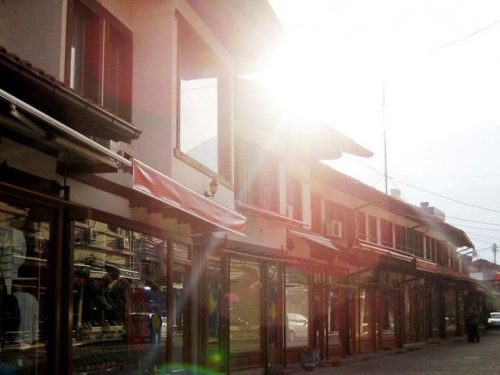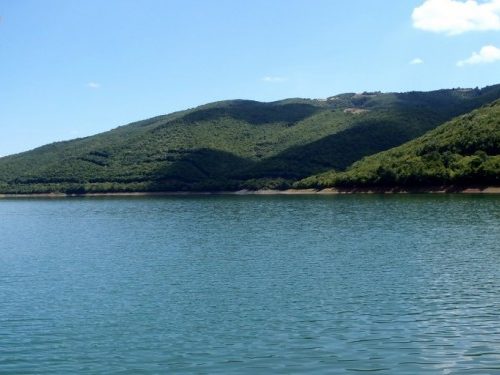During antiquity, the area which now makes up Kosovo was inhabited by various tribal ethnic groups, who were liable to move, enlarge, fuse and fissure with neighbouring groups. As such, it is difficult to locate any such group with precision. The Dardani, whose exact ethno-linguistic affiliation is difficult to determine, were a prominent group in the region during the late Hellenistic and early Roman eras. The area was then conquered by Rome in the 160s BC, and incorporated into the Roman province of Illyricum in 59 BC. Subsequently, it became part of Moesia Superior in AD 87.
Ottoman Kosovo (1455 – 1912)
Kosovo was part of the Ottoman Empire from 1455 to 1912, at first as part of the eyalet of Rumelia, and from 1864 as a separateprovince (vilayet). During this time, Islam was introduced to the population. The Vilayet of Kosovo was an area much larger than today’s Kosovo; it included all today’s Kosovo territory, sections of the Sandžak region cutting into present-day Šumadija and Western Serbia and Montenegro along with the Kukës municipality, the surrounding region in present-day northern Albania and also parts of north-western Macedonia with the city of Skopje (then Üsküp), as its capital. The Serbian position is that archives reveal an overwhelming Serbian demographic majority in Kosovo, which was reversed by the end of Ottoman rule, as Banac summarised: “Ottoman raids, plunder, slaving forays, as well as the general devastation caused by constant wars uprooted large numbers of Serbs even before the Great Serb Migration”. This was followed by the transplantation of Albanian pastoralists from the highlands of Albania to the fertile valleys of Kosovo.
Balkan Wars
The Young Turk movement took control of the Ottoman Empire after a coup in 1912 which disposed of Sultan Abdul Hamid II. The movement supported a centralised form of government and opposed any sort of autonomy desired by the various nationalities of the Ottoman Empire. An allegiance to Ottomanism was promoted instead. An Albanian uprising in 1912 exposed the empire’s northern territories in Kosovo and Novi Pazar, which led to an invasion by the Kingdom of Montenegro. The Ottomans suffered a serious defeat at the hands of Albanians in 1912, culminating in the Ottoman loss of most of its Albanian-inhabited lands.
First World War
In the winter of 1915–16, during World War I, Kosovo saw the retreat of the Serbian army as Kosovo was occupied by Bulgaria andAustria-Hungary. In 1918, the Allied Powers pushed the Central Powers out of Kosovo. After the end of World War I, the Kingdom of Serbia was transformed into the Kingdom of Serbs, Croats and Slovenians on 1 December 1918. Kosovo was split into four counties, three being a part of Serbia and one of Montenegro (northern Metohija). However, the new administration system since 26 April 1922 split Kosovo among three Areas of the Kingdom: Kosovo, Raška and Zeta. In 1929, the Kingdom was transformed into the Kingdom of Yugoslavia and the territories of Kosovo were reorganised among the Banate of Zeta, the Banate of Morava and the Banate of Vardar.
Second World War
After the Axis invasion of Yugoslavia in 1941, most of Kosovo was assigned to Italian-controlled Albania, with the rest being controlled by Germany and Bulgaria. A three-dimensional conflict ensued, involving inter-ethnic, ideological, and international affiliations, with the first being most important. Nonetheless, these conflicts were relatively low-level compared with other areas of Yugoslavia during the war years, with one Serb historian estimating that 3,000 Albanians and 4,000 Serbs and Montenegrins were killed, and two others estimating war dead at 12,000 Albanians and 10,000 Serbs and Montenegrins
Kosovo in Yugoslavia
The province as in its outline today first took shape in 1945 as the Autonomous Kosovo-Metohian Area. Until World War II, the only entity bearing the name of Kosovo had been a political unit carved from the former vilayetwhich bore no special significance to its internal population. In the Ottoman Empire (which previously controlled the territory), it had been a vilayet with its borders having been revised on several occasions. When the Ottoman province had last existed, it included areas which were by now either ceded to Albania, or found themselves within the newly created Yugoslav republics of Montenegro, or Macedonia(including its previous capital, Skopje) with another part in the Sandžak region of Šumadija and Western Serbia.Inter-ethnic tensions continued to worsen in Kosovo throughout the 1980s.The 1986 Memorandum of the Serbian Academy warned that Yugoslavia was suffering from ethnic strife and the disintegration of the economy into separate economic sectors and territories, which was transforming the federal state into a loose confederation. In February 1989 in protest, the Trepca miners began a hunger strike before the official abolition of the autonomy of Kosovo.
Kosovo War
The conflict had been going on since the early 1990s, when Slobodan Milošević, the former Yugoslav President, reduced Kosovo’s autonomy, which the province has had since 1969. Kosovo Albanians protested and proclaimed the independent Republic of Kosovo, which, however, was only recognized by neighboring Albania, and refused to cooperate with authorities. Milosevic responded with the dismissal of all Kosovo Albanians in the local area and other harassment, which led to violence between Serbian military and Albanian inhabitants of Kosovo in the mid-1990s.
Declaration of independence
The Republic of Kosovo declared independence on 17 February 2008 and over the following days, a number of states (the United States, Turkey, Albania, Austria, Croatia, Germany, Italy, France, the United Kingdom, the Republic of China (Taiwan), Australia, Poland and others) announced their recognition, despite protests by Russia and others in the UN. As of 25 September 2013, 106 UN states recognise the independence of Kosovo and it has become a member country of the IMF and World Bank as the Republic of Kosovo.Accordance with International Law of the Unilateral Declaration of Independence In Respect of Kosovo was a request for an advisory opinion referred to the International Court of Justice by the UN General Assembly regarding the 2008 unilateral declaration of independence of Kosovo. This was the first case regarding a unilateral declaration of independence to be brought before the court.
Republic of Kosovo
The Republic of Kosovo set up after the 2008 Declaration of Independence continued to operate under international supervision by theEuropean Union Rule of Law Mission in Kosovo (EULEX). The Constitution of Kosovo came into effect on 15 June 2008. It provides for an elected Assembly of Kosovo. Parliamentary elections were held on 12 December 2010. They were won by incumbent Hashim Thaçi’sDemocratic Party of Kosovo (DPK). The first post-independence local elections were held in 2009 and again in 2013. The Serb-inhabited parts of Kosovo that do not recognize the 2008 Declaration of Independence style themselves as the Community of Municipalities of the Autonomous Province of Kosovo and Metohija.The Albanians are considered descendants of ancient Illyrian or Thracian tribes of Indo-European origin that may have come to the Balkan Peninsula even before the Greeks.Albanopolis city was mentioned in the 2nd century BC by Ptolemy in his Geography. Later, while nominally under Byzantine rule, Albania was raided by Slav invaders in the 6th century and was annexed to Bulgaria in the 9th century.



